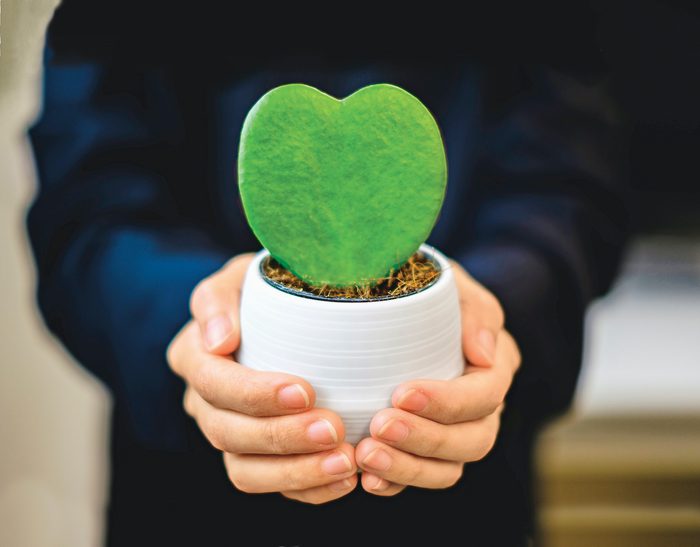
Pet Friendly Indoor Plants: Sweetheart Hoya
Hoya kerrii
The charming heart-shaped leaves are where sweetheart hoya gets its adorable name. Typically grown in a hanging basket, these pet friendly plants can be trained to climb a trellis, too. Sweetheart hoya does well in direct or indirect light and can go two or three weeks between waterings.
Why we love it: An individual leaf cutting from sweetheart hoya can be planted upright in a small pot and will grow for a few years, making it a good Valentine’s Day gift.
Helpful resource: Before bringing a new plant home, check to see if it’s toxic to pets. The American Society for the Prevention of Cruelty to Animals website offers comprehensive info. Just search for the name of the plant.
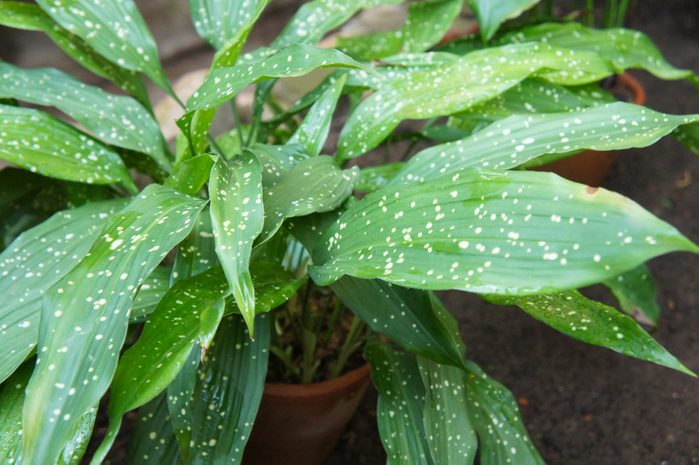
Cast Iron Plant
Aspidistra elatior
As its name implies, the cast iron plant is tough. It tolerates a wider range of humidity, light conditions, temperatures and watering frequency than most houseplants. Wipe the big leaves free of dust with a damp cloth.
Why we love it: Cultivars such as Milky Way and Variegata feature white speckles or stripes, adding fun details to an already striking plant.
Psst–avoid these houseplants that aren’t safe for dogs.
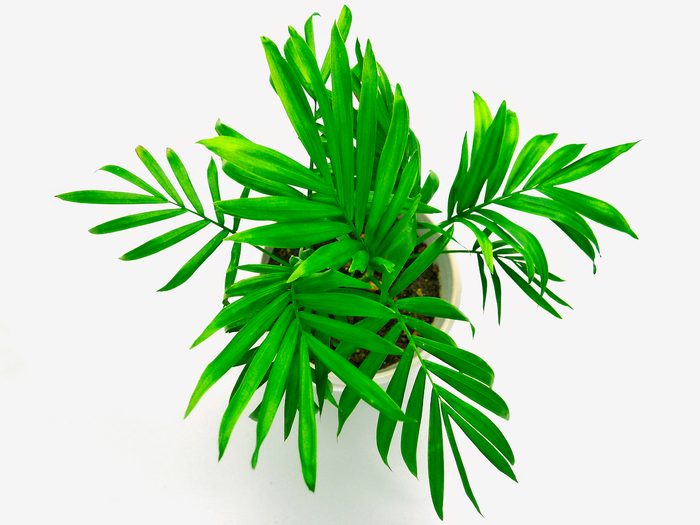
Parlor Palm
Chamaedorea elegans
Popular since Victorian times (when this palm was often displayed in parlors), these resilient pet friendly plants tolerate low light, grow best in controlled temperatures and require relatively little maintenance. However, parlor palms are sensitive to overwatering, so check that the top inch of soil is dry to the touch before grabbing a watering can.
Why we love it: The tropical-looking palm can grow up to 4 feet tall.
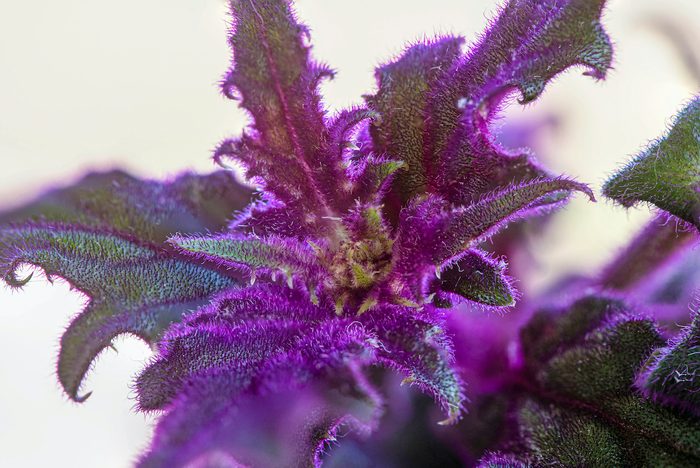
Purple Velvet Plant
Gynura aurantiaca
Because these purple velvet plants thrive in high humidity with bright but indirect light, the bathroom is a popular place to grow them; just don’t get the leaves wet. Once it’s mature, colorful but stinky orange blooms appear. Prune frequently to encourage more leaves and fewer flowers.
Why we love it: The plant’s dense, velvety hairs give its edges a stunning purple glow.
No green thumb? Try the top 10 hard to kill houseplants.
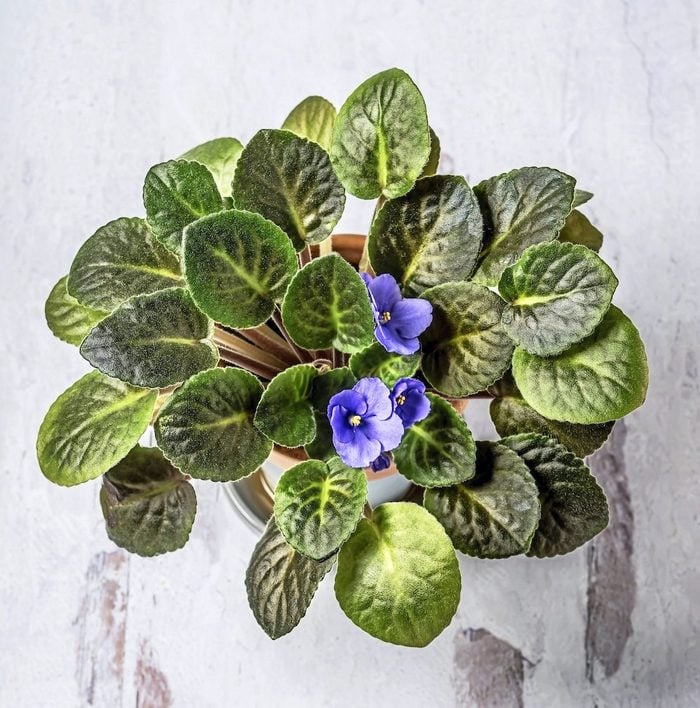
African Violet
Saintpaulia ionantha
African violets are a bit fussy, but some simple tips make their care easier. They don’t like getting their leaves wet, so water them from underneath by filling the saucer with 1 inch of water and setting the pot on top for up to 30 minutes or until the soil is moist. Another trick: Keep your African violets in bright but indirect light. An east-facing window is perfect.
Why we love it: The purple flowers add a color pop to any room.
Make sure to avoid the worst poisonous and invasive plants for your yard.
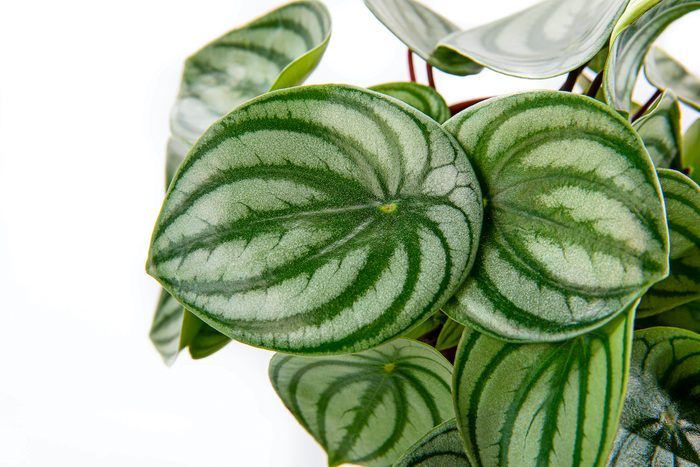
Watermelon Peperomia
Peperomia argyreia
Beware of overwatering this eye-catching peperomia. Find a sweet spot by planting it in well-draining potting soil and watering regularly but letting the soil dry to the touch between each dousing.
Watermelon peperomia doesn’t mind crowded roots. It’s OK to place it in a pot that seems slightly too small.
Why we love it: A bold pattern helps it really stand out in a plant crowd.
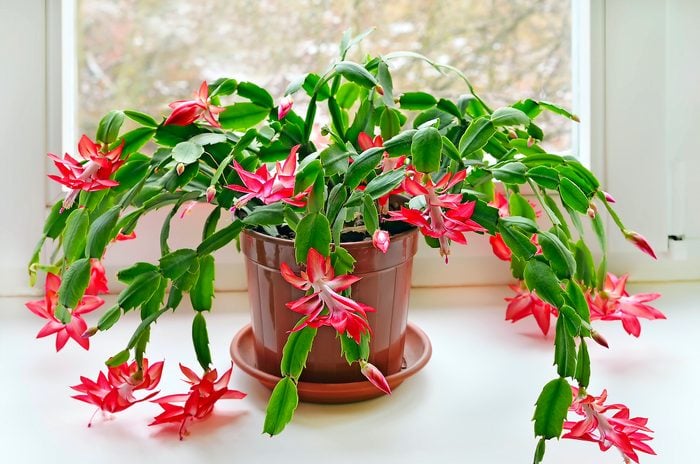
Christmas Cactus
Schlumbergera russelliana
This cactus bursts into vibrant color after many other flowers have wilted. Give your Christmas cactus 12 to 14 hours of darkness per day in fall and early winter, allow the soil to go drier and put it in a cooler spot for the best chance at blooms. Use well-draining soil intended for succulents.
Why we love it: Easy to grow and nontoxic, it’s a great alternative to holiday houseplants that may be dangerous to pets such as mistletoe or amaryllis.
Psst—a Thanksgiving cactus is the perfect turkey day centerpiece.
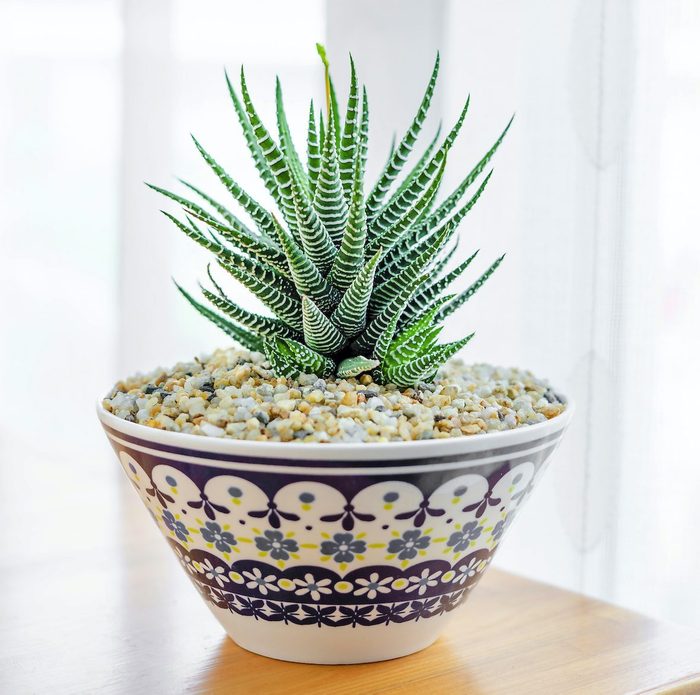
Zebra Plant
Haworthiopsis fasciata
If you tend to underwater your houseplants, a zebra plant can handle it. Known for being extremely tolerant of neglect, this succulent thrives with bright, indirect light. Don’t fret if your home is darker; it also tolerates low light.
Why we love it: A healthy zebra plant will propagate on its own, usually in spring or fall. Once a succulent offset, also called a pup, is 2 to 3 inches tall, carefully uproot it and plant it in its own pot.
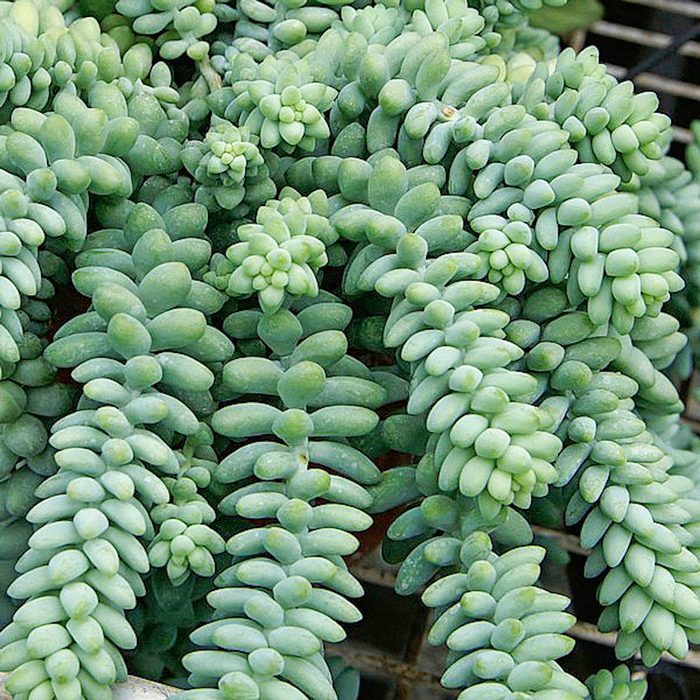
Burro’s Tail
Sedum morganianum
Add dramatic texture to your home with drought-tolerant burro’s tail. Its unique stems look lovely trailing from a hanging basket or a high shelf. This succulent’s plump leaves are fragile and prone to falling off, though, so be gentle when handling or repotting it, and keep it in a safe space.
Why we love it: Burro’s tail thrives when left alone, needing only bright, direct light and occasional watering.
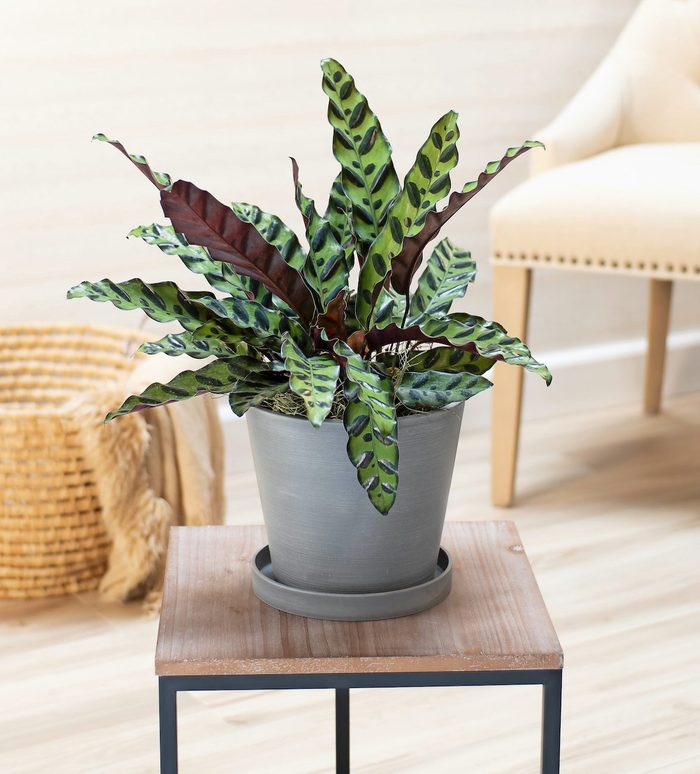
Rattlesnake Plant
Goeppertia insignis
Caring for this beauty is tricky but rewarding. While rattlesnake plants do best with moist soil, they don’t tolerate overwatering. A sure sign that it has had too much water is leaves turning yellow. If the soil feels dry, give these pet friendly plants a drink.
Why we love it: Striking, dynamic leaves fold in tight in the evening, then relax and spread out again in the morning.
Next, check out the top 10 blooming houseplants to grow indoors.
